Originally posted 2018-09-20 06:25:57.
In an oral culture — one that is not written down — mythology evolves as it is passed from storyteller to storyteller. The Jesus myth was created in exactly this way, pasted together from earlier sources. This process is called ‘syncretisation.’
There is no fixed record of an oral tradition, by definition. In an oral culture or tradition, myths grow and develop to reflect the lived experiences and cultures of the people telling them. It was only when writing was invented that these traditions could be codified and by that time, they had been evolving for thousands of years. This means that there are many versions of the same myth, as different peoples carried it forward.
So we cannot say that, because detail differences exist between two similar myths, they are different or have different origins.
In fact the likelihood is that they are indeed the very same but have organically evolved differences through generations of storytelling.
What we have to do is to look for points of similarity. This is exactly what a biologist does when trying to identify an unknown species. In biology, we find points of reference that allow us to identify to which other species our subject is related. The closest relative to the Giant Panda is the Red Panda, but they look nothing like each other; you have to look more closely. Mythology, like nature, is an organic, evolutionary process.
Then we have to look at the historical and geographical context, to see if it is possible that syncretic development has happened. Syncretised myths are not identical, but they share points in common and an observable pattern of development. The more of these they are, the more likely it is that two stories have the same origin.
The original source for the Jesus myth.
Writing was invented by the Sumerians, some 6500 years ago. In the material they left there are already a number of myths that are clearly syncretised from an original common source. The best known and most complete of these are the myths of Inanna.
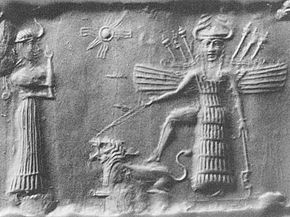
Inanna is an anthropomorphic deity, which is to say she had a human form — superhuman in fact. Previous deities were the Mother Sea, Nammu to the Sumerians and the Mother Earth, Ki. These were distant and remote and could not be communicated with directly. We call these transcendent deities.
Inanna is invisible to most humans but she has a human form and lives, at least partly, amongst them.
This is the first obvious point in common between Inanna and Jesus: they are both anthropomorphic — that is, human form — versions of a transcendent or non-human deity.
One point in common is not enough to prove the relationship. When we look into the myth of Inanna, however, we find many, relative to Jesus. The most significant of these is the story of Inanna’s descent into the Underworld.
Inanna’s Descent into the Underworld.
In this, Inanna decides to enter the Underworld, or in other words, to die. She puts on her finest clothes and jewellery and, accompanied by a servant, goes to the Palace Ganzer, the entrance to this dread place. There she hammers on the door until it is opened.
Inanna says to the doorward that she has come to visit her sister, Ereshkigal. This is reported to Ereshkigal who, though deeply troubled, commands that Inanna should enter. However, at each of the seven gates she must pass through, an item of her clothing and jewellery is to be removed.
Inanna’s death.
Inanna explains to her servant that she will enter the Underworld. The servant must wait for three days, and then seek help. She is to ask for this from three other deities; but only one, Inanna’s uncle Enki, the Lord of Wisdom and Sweet Water, will help.
Inanna enters the dread Underworld and at each gate an item of finery is removed so that she is naked when she appears before Ereshkigal. Inanna then does something strange: she causes Ereshkigal to rise from her throne and sits there herself.
The Anuna, the judges, see this and judge her; they look at her ‘with the look of death’ and Inanna dies. Her body is hung on a hook on the wall to rot.
Inanna’s servant waits the prerequisite three days, lamenting and ‘lacerating her eyes and buttocks’ and then sets off for help. As Inanna has predicted, the first two deities that she visits refuse to help, saying that no-one may recover from death and that this is all Inanna’s fault; she must bear the consequences.
Enki.
 The third, Enki, however, is prepared to assist his niece. He takes the dirt from under his fingernails and creates two tiny spirits. He tells them to enter the Underworld in secret and go to the royal chamber where they will find Ereshkigal in agony. They are to say that they will relieve her pain if she will release Inanna. They are to ask for nothing else. Enki tells them that Ereshkigal will at first refuse and offer many other things and great riches but they are to refuse until she agrees. They are then to use two magical devices Enki gives them, the life-giving plant and the life-giving water, and to place these on Inanna and in her mouth; she will then come back to life.
The third, Enki, however, is prepared to assist his niece. He takes the dirt from under his fingernails and creates two tiny spirits. He tells them to enter the Underworld in secret and go to the royal chamber where they will find Ereshkigal in agony. They are to say that they will relieve her pain if she will release Inanna. They are to ask for nothing else. Enki tells them that Ereshkigal will at first refuse and offer many other things and great riches but they are to refuse until she agrees. They are then to use two magical devices Enki gives them, the life-giving plant and the life-giving water, and to place these on Inanna and in her mouth; she will then come back to life.
The two spirits set off and find everything as Enki has predicted. Ereshkigal is writing on the floor of her chamber, her hair ‘like leeks’ and in agony.
At first she refuses to release Inanna but eventually she gives up; she agrees and the spirits give the life-giving water and plant to Inanna. The goddess is brought back to life and, in the company of the demonic guardians of the Underworld, rises up out of the Underworld. However, there is a catch: Inanna may only spend 6 months of the year in the world above, and the other six in the Underworld.
Ereshkigal.
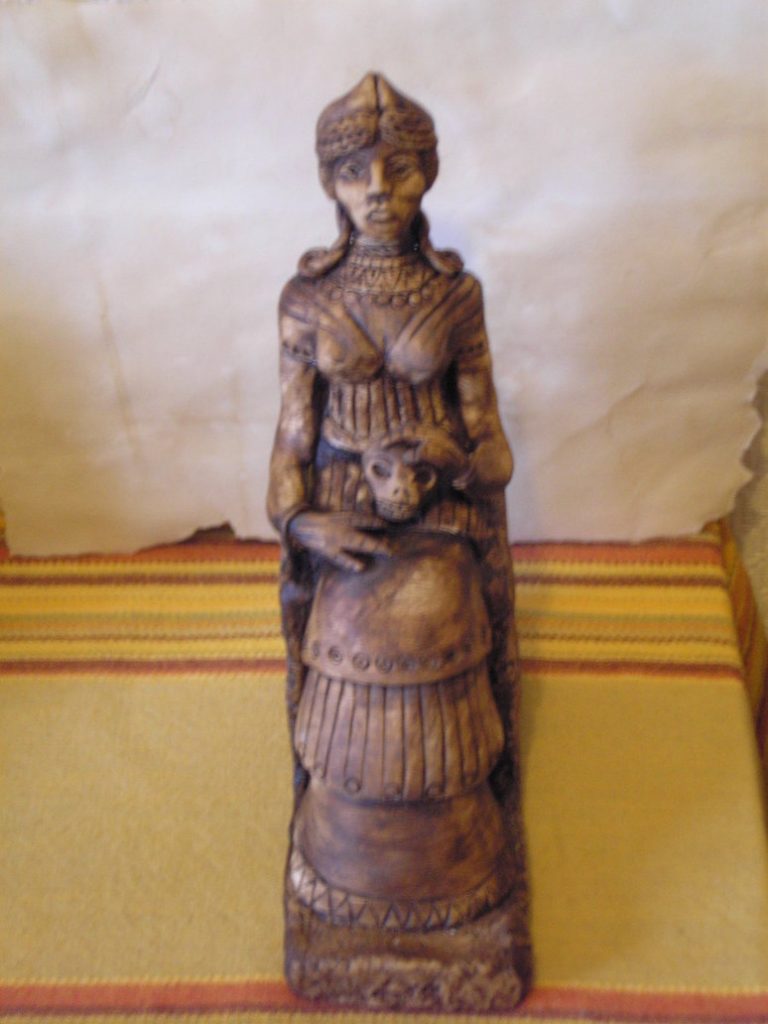
Let’s deconstruct this a bit. I said the Goddess Earth was called ‘Ki’. Ereshkigal means ‘Lady of the Goddess Earth’. In other words, she is the anthropomorphic representation of the older Goddess, the Earth.
This tale comes from the temperate zone, where the year has seasons. So, half the year is plentiful and crops will grow, and half the year they will not. Sumer, though not as arid as today — it lies in what is now Iraq — had a long dry season when the ground was parched. The reference to Inanna spending 6 months underground and 6 above is directly related to this.
Inanna and Ereshkigal are actually two facets of the same Goddess, the Earth. One, Inanna, is the Earth in bountiful summer and the other, Ereshkigal, in winter.
This is why Inanna becomes Ereshkigal and sits on her throne, and then is reborn from herself. The goddess of light dies to become the goddess of darkness, and then is reborn from herself.
The reference to Inanna being divested of her finery is a metaphor for the dying back of the vegetation as autumn comes. Then she dies and goes under the ground — the Underworld. But next spring she will be reborn.
Ereshkigal’s agony is the pain of giving birth, as she brings Inanna into life again. Then Inanna goes up out of the Underworld.
To the Sumerians, the living world and Heaven were the same place. Deities and many other spirits inhabited the same physical space as humans, but were invisible. Sumerian culture was essentially animist.
Inanna is ‘the Queen of Heaven’ but she lives on Earth. So when she rises from the Underworld, she is rising into Heaven, as the Sumerians understood it.
Changing the god from woman to man.
Prior to the establishment of the first cities, in Sumer in the fourth millennium BCE, a goddess-culture was in place. We have clues as to how this was run from surviving, later texts, the surviving mythology and the artefacts left behind. These also show a slow and deliberate movement of powers from women and the Goddess to men and gods.
With these changes the whole religious system was inverted so that male gods were put in charge. In Judaism and Christianity, the only gods are male. So we should not be surprised that a myth that originally featured a woman should have been altered to make the central character a man.
Noah and Atrahasis
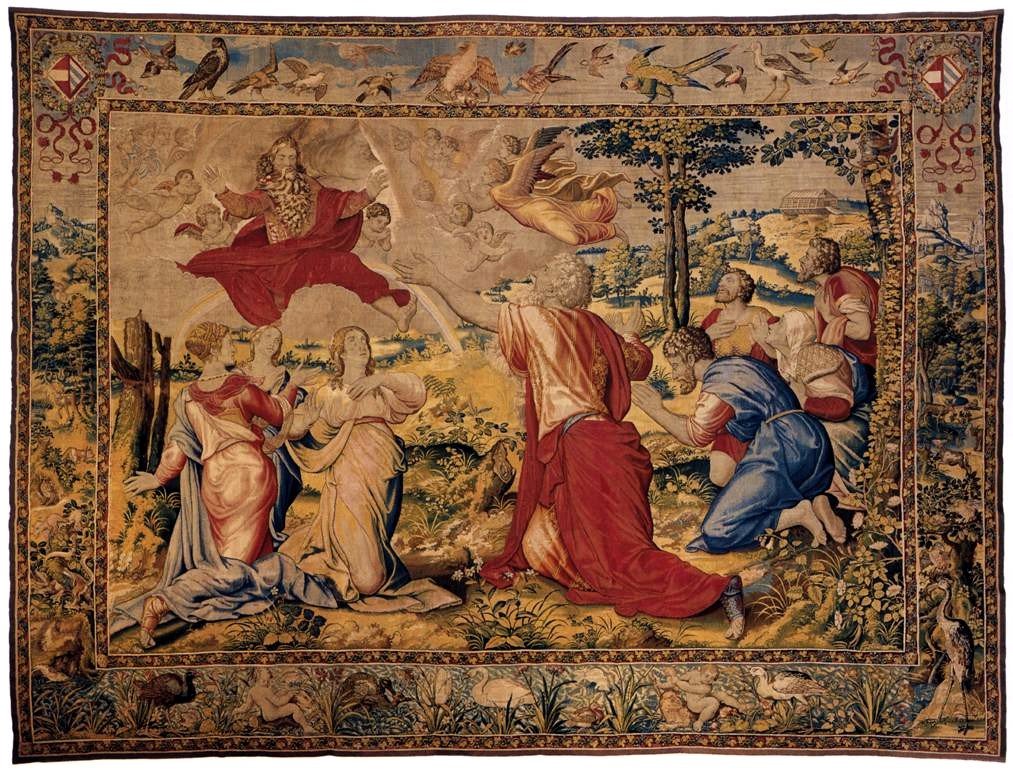 Compare this with another famous Biblical myth, of Noah and the Flood. This is a straight copy of the Sumerian tale of Atrahasis, with only a few names and details changed. It’s not so much syncretisation as direct plagiarism. The Jesus myth is a far more subtle case. It does, however, clearly show that the culture that wrote the Bible was already borrowing from earlier ones.
Compare this with another famous Biblical myth, of Noah and the Flood. This is a straight copy of the Sumerian tale of Atrahasis, with only a few names and details changed. It’s not so much syncretisation as direct plagiarism. The Jesus myth is a far more subtle case. It does, however, clearly show that the culture that wrote the Bible was already borrowing from earlier ones.
Both Inanna and Jesus are anthropomorphic versions of a transcendent deity. Inanna is the human form of the Earth Mother, while Jesus is the human form of the Sky father.
Death and Rebirth.
The deities die are then reborn. Both Inanna and Jesus are ‘dying and rising deities’, of which there are a very great many from all over the world. The annual regeneration of the Goddess, the Earth, was and remains central to the survival of human life in the temperate zones . These tales are expressions of this.
Both Inanna and Christ are hung on a high place for their bodies to corrupt.
Then, both Inanna and Jesus physically enter the Underworld, which is a metaphor for the reality of death. For a Sumerian this was literally the earth beneath our feet so the Palace Ganzer, where Inanna dies and is reborn, is under the ground. This is because inside the Earth, under the ground in this understanding, is within the Goddess’ body, inside her womb.
In the Jesus myth, the hero’s body is placed under the ground in a tomb, which is then blocked with a stone. The tomb is a metaphor for the womb of the Goddess. Both Inanna and Jesus are reborn from it. They remain in the Earth, the womb of the Goddess where regeneration occurs, for the three days that they are dead.
 Why three days? This is one of the most ancient mythological references we know. It gives us the concept of ‘triplism’, which we find all over the ancient world from triple goddesses to three-headed dogs like Cerberus, who guarded the gate of the Greek underworld.
Why three days? This is one of the most ancient mythological references we know. It gives us the concept of ‘triplism’, which we find all over the ancient world from triple goddesses to three-headed dogs like Cerberus, who guarded the gate of the Greek underworld.
Celestial observation.
The moon has three visible phases, waning, full and waxing and the Earth has three seasons of life, Spring, Summer and Autumn. Perhaps most crucially, at the solstices, there are three days when the sun appears to rise to the same height in the sky at midday. On the third day after the winter solstice it begins to rise again.
This is why Jesus mythical ‘birthday’ is the 25th, a date he shares with nearly all other agrarian deities derived from solar-observing cultures. The 25th is the first day that an observer can see the change in declination of the sun and so know for certain that spring will come.
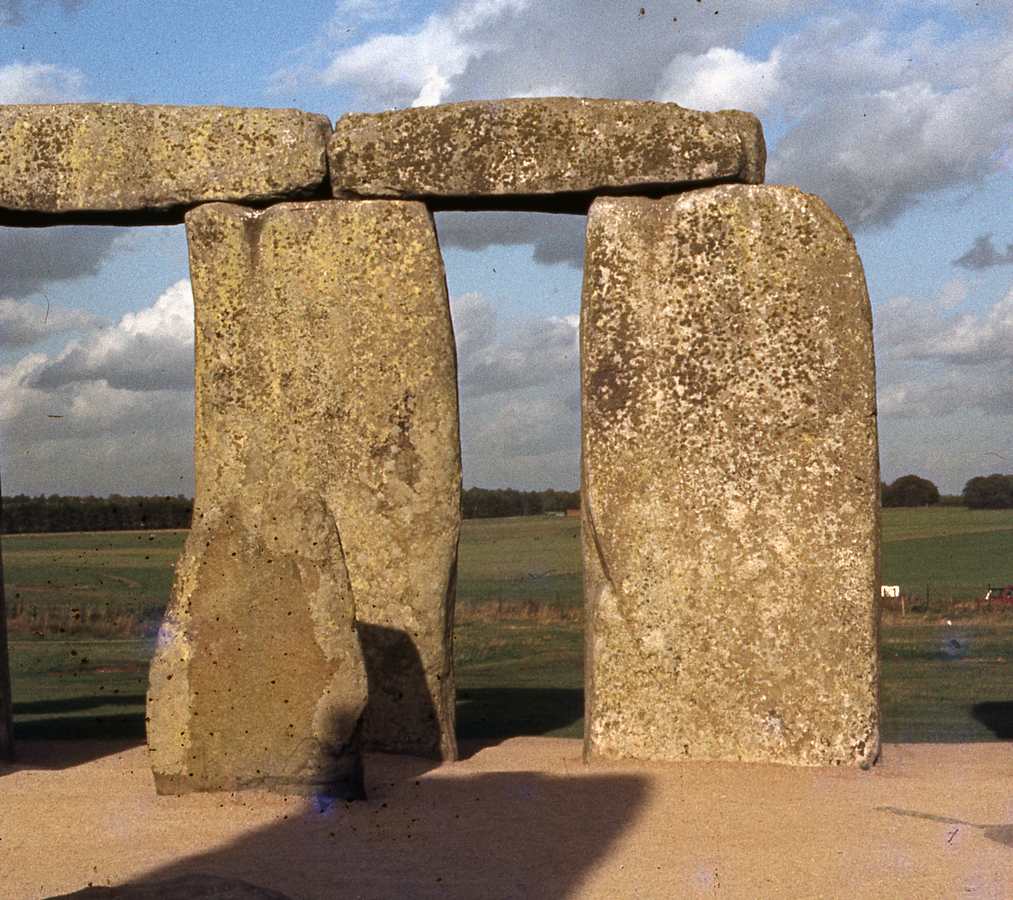
Our ancestors were not sun-worshippers. They believed that the sun was under the control of the Goddess Earth. The the sun was the indicator that the Goddess would regenerate. So monuments like Stonehenge are not sun-worshipping temples. The deity being celebrated was The Goddess.
This three day hiatus, which also happens at the summer solstice, is the main reason why Inanna remains dead for three days and so why Jesus does too. After their ritual rebirth from the womb of the Earth Mother, both deities rise into Heaven — which in the time that Inanna was invented was a plane contiguous with the one humans live on, but which, by the time Jesus was, had developed into being in the sky.
Once again, it should be noted that not one but three crosses are placed on Calvary for Jesus ‘execution’. It’s just another metaphor for triplism and other Goddess mythology that informs the Jesus story.
There are more commonalities.
We have established that the Jesus story is syncretised from earlier ones but there are other commonalities. Inanna’s rebirth is facilitated by a woman, her servant. In Jesus’ myth, it is women who open his tomb and allow him to rise again. These women represent the cadre of priestesses who officiated and celebrated the regeneration of the Goddess in the early solstices. They are the midwives of the Goddess who, in the Jesus myth, perform the same role for the male deity.
The other way to demonstrate syncretism is the existence of similar myths from the same region. These allow a timeline to be established between the earliest that we know of to the latest. So do these exist? Can we establish such a timeline?
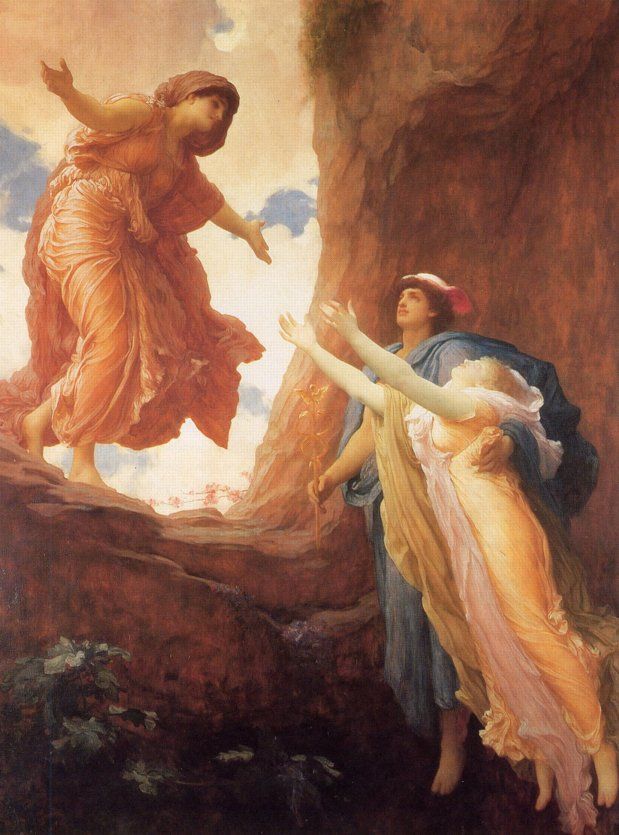 The answer is ‘yes’. The Middle and Near East, the Levant and Eastern Mediterranean are full of similar tales, from other Sumerian versions, such as that of the Goddess Sul, to the Eleusian Mystery cults, to the Greek tradition of Orpheus and Eurydice.
The answer is ‘yes’. The Middle and Near East, the Levant and Eastern Mediterranean are full of similar tales, from other Sumerian versions, such as that of the Goddess Sul, to the Eleusian Mystery cults, to the Greek tradition of Orpheus and Eurydice.
In fact this is so common that is has its own name, katabasis. This is derived from the Greek and means ‘going downhill’ or ‘descending’. Mythologists use it to describe the huge number of such myths that exist. In the context of these others, there is nothing at all remarkable or strange about about the Jesus myth; it is just one of many variations on a theme.
Apologetics — the enemy of reason.
Christian apologists are aware of the catastrophic threat that an understanding of syncretisation presents to their claims. If Jesus is just another version of well-known deity, then religious claims for him to be ‘unique’ would be torpedoed.
This was understood by the first century CE when the Christian apologist Justin Martyr claimed that the earlier stories has been ‘planted by the devil’ to introduce doubt. For Justin to say that was odd, while in other letters he was actually claiming that Jesus was ‘no different’ to earlier deities like Perseus. As ever, the apologist will use any ruse, no matter how preposterous, to press his (or, unfortunately, her) ridiculous claims.
Jesus is a syncretised ‘dying and rising’ or ‘katabatic’ deity. This has been established beyond any question since the nineteenth century. There are literally hundreds of such deities, from all over the world. They include Demeter, Osiris, Krsna and many, many others. They are the theological explanation of the seasons of the year.
Deities like this are intimately connected with Time itself, through the progress of the seasons but also, critically, with the idea of calendars that can tell the faithful exactly when their feast-days occur. This is because Time is under the control of the Goddess herself. Indeed, Time is the Goddess.
Updated 12 February 2022





I welcome intelligent debate, but commenters on this site are required to be polite and respectful, and to couch their arguments in terms consistent with civilised discussion. Ad hominems and personal attacks are never allowed, and USicans in particular should try very hard to mind their manners, since they clearly have issues there.
Failure to comply will result in your comments being trashed. No exceptions.